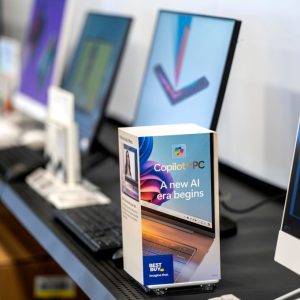
AWS has expanded its Bedrock foundation AI service to include new models from Anthropic, Stability AI and Cohere. Amazon’s cloud platform claims it has added thousands of new customers to Bedrock including Sony, Ryanair and Lonely Planet.

Amazon first announced Bedrock in April this year, saying it would bring a range of generative AI services and capabilities to AWS. At launch, it had ultra-large machine learning models from AI21, Anthropic, Stability AI and Amazon’s own Titan family of foundation models.
The expansion adds the latest models from those providers including Claude 2 from Anthropic and Stable Diffusion XL 1.0 from Stability AI. It also adds an enterprise-friendly foundation model Command, developed by another vendor, Cohere. This text generation model has been trained for business applications across 100 languages.
“Cohere is pleased to expand our collaboration with AWS to offer our foundational AI models on Amazon Bedrock,” said Saurabh Baji, SVP of engineering at Cohere. “We aim to provide our customers with the greatest possible flexibility in ways to access our technology.”
Command is trained to follow user commands and be useful in practical business applications. It is fine-tuned for summarisation, copywriting, extraction and question-answering. As well as Command, Cohere is bringing its text interpretation model Embed to AWS. This is useful in search and classification tasks.
AWS Bedrock features AI models that can produce images, text and code
Anthropic is bringing its latest version of Claude to Bedrock. The model can take up to one million tokens in a single conversational task prompt. This means it can work across hundreds of pages of text from a single prompt and write long-form reports and documents from that analysis.
Stability AI’s new Stable Diffusion XL 1.0 model is an image generation and analysis tool. The latest model can create text, images, audio and video as well as code from simple text commands. It has improved composition detail over previous generations to create more realistic creations.
Amazon has also added a tool called Agents that can split tasks into an orchestration plan without any manual coding. These tasks can cover a range of use cases and provide end users with answers on proprietary knowledge sources. It can automatically call any Bedrock API to generate appropriate responses and show output in a readable format. AWS gave the example of an insurance agency automating claims or managing pending paperwork.
Since the launch of ChatGPT by OpenAI in November last year companies have switched to utilise the power of generative AI. This includes software and service providers like Salesforce and IBM as well as the cloud hyperscalers – AWS, Microsoft’s Azure and Google Cloud. Amazon claims AWS has the broadest and deepest set of ML services, focusing on third-party tools rather than in-house models. Google and Microsoft also offer a range of models in addition to their own tools.
Swami Sivasubramanian, AWS VP responsible for machine learning, said: “Through services like Amazon Bedrock and collaborations with industry leaders, we are democratising access to generative AI, so wherever customers are on their machine learning journey, they can use AWS to reimagine experiences and bring new products to life.”






